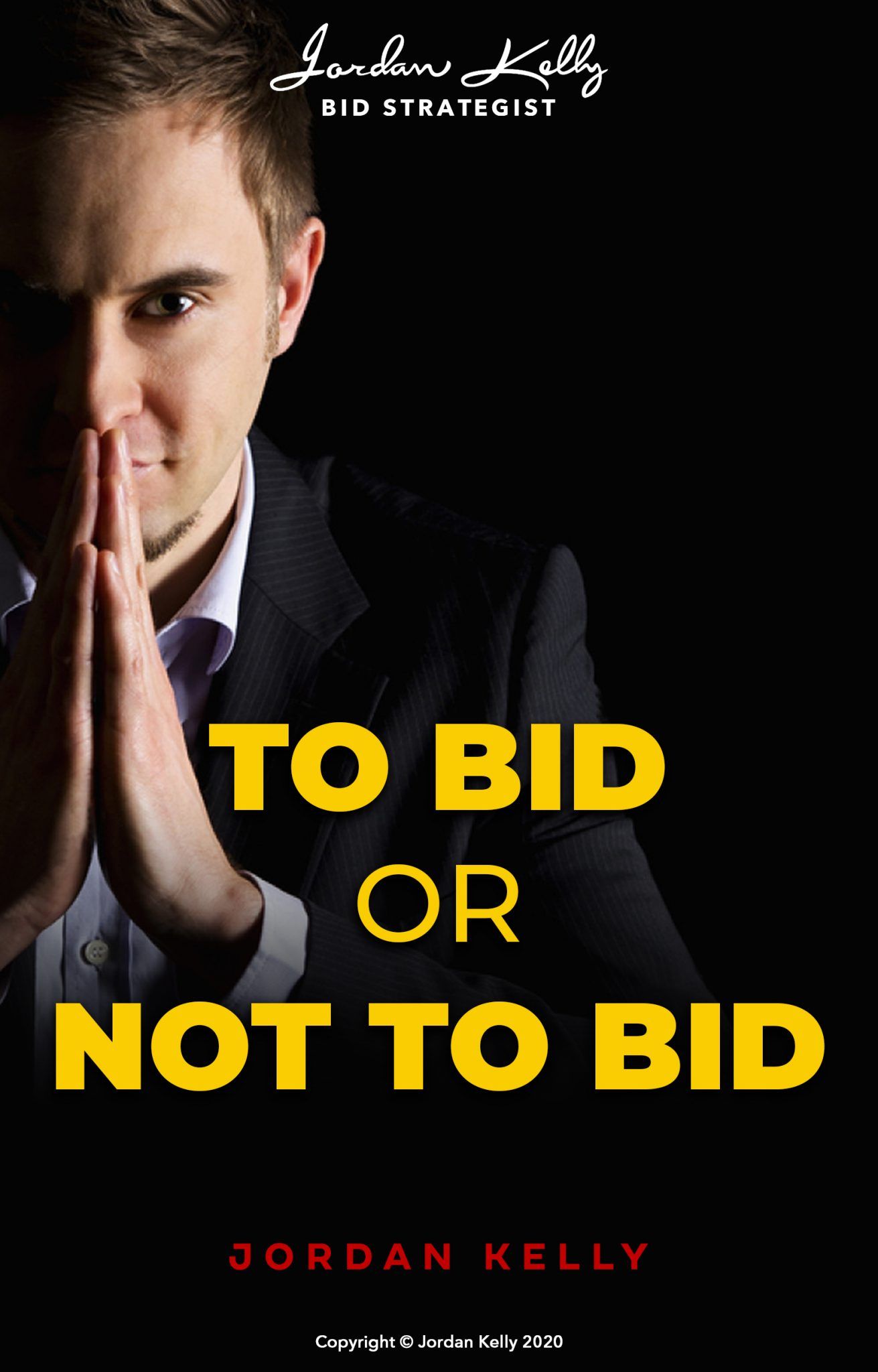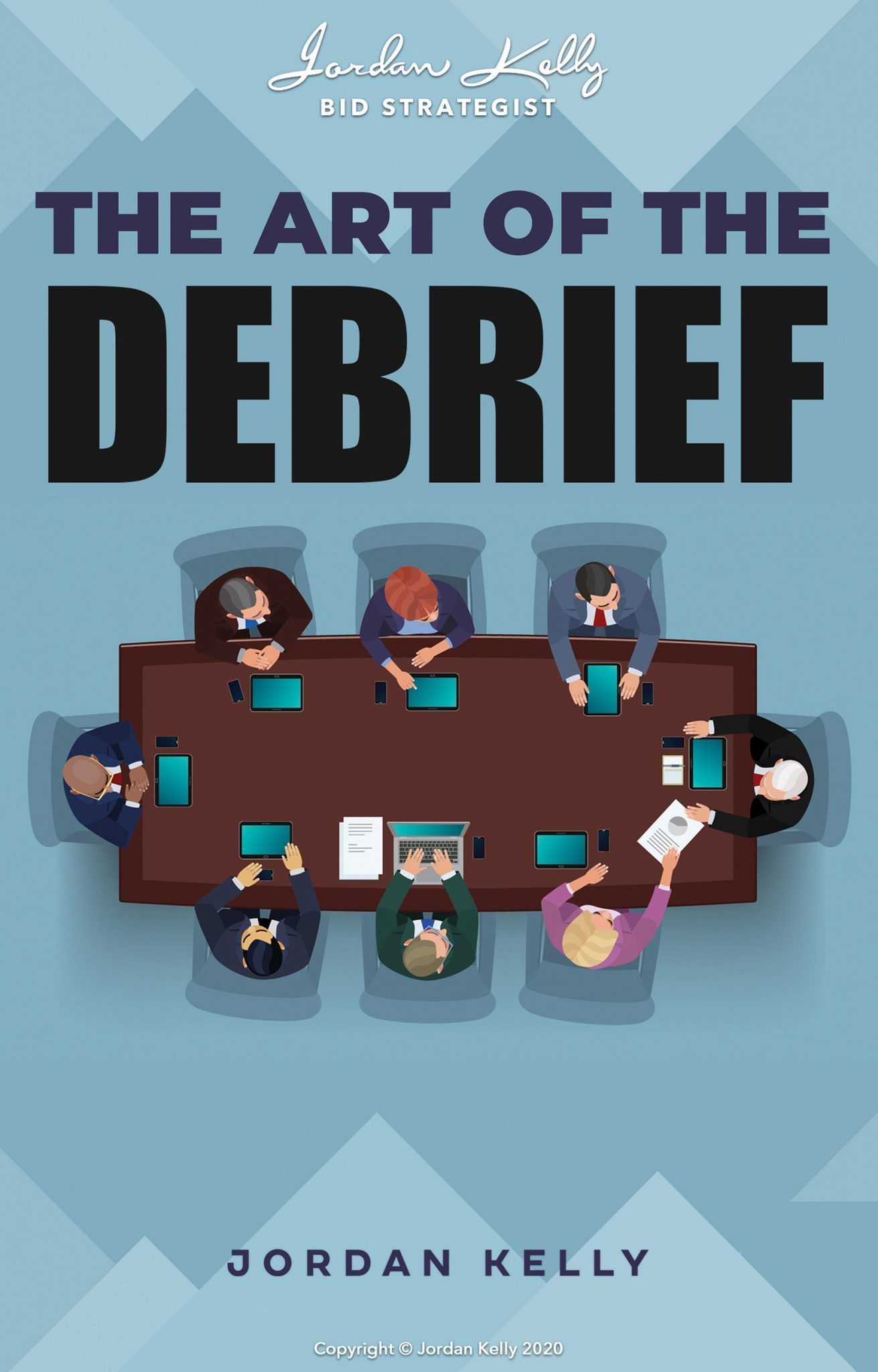CATEGORIES:

The No. 1 way to strike a consistently high win rate with your bids and high-stakes proposals is simply this:
Make it a top priority to understand why you won, or why you lost, all those that came before the one you’re currently working on.
Clearly, the client-delivered debrief is the most obvious way to achieve a first-hand understanding of whether and where a submission hit the mark, or whether and where it didn’t – and (also, hopefully) how it stacked up against the competition.
The value of the information and insights obtained from such an exercise, however, is almost always directly proportionate to how effectively each side prepares for, and participates in, the debriefing session.
The “trick” to using the debrief as your “secret weapon” in your quest to consistently pip the competition at the post, lies in extracting high-potency intelligence; frank, no-holds-barred, painstakingly detailed commentary . . . “news you can use” to mastermind quantum leaps of continuous improvement in your processes. Even when you’re already submitting winning bids.
Assumptions Make Dangerous Allies
Don’t let a successful bidding track record blind you to the merits of working hard to extract valuable feedback on all aspects of your most recent bid: To repeat success wilfully, you must know exactly what created it.
Assumptions make dangerous allies. In my opinion, one of the greatest quotes of all time was uttered by Napoleon Bonaparte, when he said: “The greatest danger occurs at the moment of victory.”
When being enlightened as to why it won, many a jubilant winning team has had its proverbial bubble burst by learning that it was a completely different factor that won it the bid, than that which it had assumed. (It goes without saying, of course, that if you’re on a losing streak you have an even greater incentive to find out all you can from a debrief, to help steer you towards success.)
How to avail yourself and your team of a high-value debrief, then?
Corral the Horses: You Want It from Their Mouths (Not Third-Hand)
First and foremost, you want the feedback to come from “the horses’ mouths” i.e. the members of the tender evaluation panel . . . not second-hand, from personnel who weren’t directly involved in the evaluation, and who (worse still) may never had read your submission in detail.
Getting the right people at the debriefing table is critical.
You’ll greatly increase your chances of this by targeting your (formal) email request/s to the most senior client organisation representatives, conveying the importance, to you and your team, of the debrief. If applicable and appropriate, ensure the probity auditor of the bidding process is included in, or cc’d in on, these communications.
Don’t try to achieve this objective through phone calls, or “whipped off”, informal emails. This risks downplaying the significance of your request and of the debrief per se. Don’t be timid on this point.
You should (politely, of course) state that you’d appreciate the client-side debrief participants include those directly involved in the evaluation process. This transmits the message (in an acceptable manner) that you’d appreciate the client-side preparing adequately for the debrief, as you’ll be expecting accurate and detailed feedback.
This latter point is particularly important. In the case of a major project, it could be four or five months post-decision before a debrief is held. Thus, the evaluators need to be prompted to refresh themselves with regard to the detail of your bid documentation.
End With the Start in Mind
Secondly – plan, plan, plan.
To turn an old saying on its ear, when planning your own approach to the debrief, end with the start in mind. That is, set out to learn as much as you can about the strengths and weaknesses you exhibited in the current bid, in order to start out on a stronger footing with your next bidding performance.
When I’m preparing a bid team to attend a submission debriefing session with one of its prospect or client organisations, I work with it to do what I’m about to recommend to you here:
(1) Plan your approach and questioning outline in the same detailed manner as you’d approach preparing the outline for a bid strategy formulation workshop,.
(2) Exercise both tact and strategy when framing the questions.
(3) Practice “proactive” listening skills – and exhibit an open mind and broad shoulders.
Let’s address these three points in turn.
Mapping Out Your Approach
You don’t enter into a bid strategy workshop with no prior planning whatsoever, so why would you enter into a debrief with no pre-determination of the desired result . . . and without a roadmap to exercise your optimal level of influence over the quality of output?
If you’re thorough in identifying all the areas in which you want detailed feedback, chances are you’ll come up with more questions than you can ask in the time allotted for the debrief.
My advice is to prioritise these in accordance with the degree of value they afford you, in terms of:
(a) (if your bid lost this time) winning another similar bid or another bid with the same client, or
(b) (if your bid won) performing in a manner throughout the contract, that will ensure you of success in your project/product/service delivery, and favourable and robust positioning for future business with the client in question.
Framing the Questions
To derive accurate, detailed information, and the frankness of client commentary that might otherwise have proved too uncomfortable for the parties, you must frame your questions sensitively and productively.
One of the most important considerations you can make in mapping out your questions, is to be cognisant that there are three categories of information in any given “debriefing” environment and the associated dynamics:
1) Conscious and willing to share.
2) Conscious and not
willing to share.
3) Unconscious, so can’t
share.
It’s easy to get the Category 1 information. That’s what the client has prepared and has come there ready to offer.
Category 2 is tricky . . . but this information is particularly valuable.
Here’s how to extract it – as painlessly as possible:
Minimise the evaluation team’s discomfort by framing your questions, and pre-establishing the tone of the evaluators’ responses, such that observations are delivered as constructive criticism. Make it easy and comfortable (or as comfortable as possible) for the client-side executives to speak their minds.
Let's take, by way of example, the situation whereby a bid team that tabled a losing bid is dealing with one of the trickiest issues of all: whether or not they lost on price. And whether or not the client is prepared to admit it.
Here's how that bid team might frame its approach in the client's debriefing session:
“Obviously, when we prepare our estimates, our pricing is based on delivering the optimal result in every aspect of the project. It follows then, that in some projects there might be a connection between price and what we believe it will take to deliver that optimal result.
“It would be valuable for us to understand, from your perspective, how valuable (or otherwise) you feel that extra guarantee of satisfaction is, when we’re up against someone that comes in with a lower price.”
Category 3 requires a different type of prompt.
In this example, the bid team is endeavouring to determine where it hit the right hot buttons and where it didn’t:
“We carried out extensive background research into this project and your stakeholders’ issues, and we worked hard to pinpoint what appeared would be your top concerns and priorities. Then we worked our methodology and general approach around these.
“Could you give us some specific feedback on where we were correct with our assumptions? And could you also give us some indication of where we focused on things that weren’t as important to you?”
You may or may not agree with these hypothetical questions.
Perhaps you’d craft them a little differently. That’s fine. The point is, it’s critical to determine the specific insights you’re after, and each of the aspects of the bid in which you want those insights, and then to frame up some questions that will draw out the most instructive answers, in the most productive manner.
Testing the Answers
As politically incorrect as it may be to write this, there will be times (especially in the case of a loss) when you feel you want to be “extra sure” the feedback you received was “kosher”. I’m sure I don’t need to elaborate.
The way to deal with this is to find a polite and acceptable way to ask the same question from more than one angle and, preferably, to ask it of more than one of the panel members.
Listening & Implementing
Be sure to exhibit strong listening skills, demonstrating your appreciation of the insights being delivered and ensuring your full understanding of them (this client will now be less than impressed if your future proposals ignore the advice they’ve just imparted).
And take detailed notes. The more detail you can capture from the client team’s answers, the more useful direction you can provide back to your organisation when you debrief the broader team back at home base. (You do undertake this all-important second-level de-brief, of course, don’t you?)
In conclusion:
Bid teams often claim clients don’t give them the valuable answers and feedback they’d have liked.
I say: The responsibility for asking quality questions is yours i.e. the bidder’s.
Likewise, the responsibility for milking the most value out of the information you gather from a debrief, is yours also.
Follow these fundamentals and you’ll be well ahead of the competition when it comes to positioning your organisation for a win next time (if you lost this time) or, if yours was the winning bid, a win by a larger margin of certainty next time.
THE ART OF THE DEBRIEF
(Training Program)
The key to getting the best value from any de-briefing session offered to you is to plan carefully, in order to extract every possible clue from the process.
This two-module course provides step-by-step, real-time guidance to assist you in maximising the intel and insights available from the de-briefing opportunity. It also guides you along as you seek to ensure the permanence of the insights obtained, and the incorporation of their value into future bidding processes.
TO BID OR NOT TO BID

(Training Program)
The real value of a thorough and well thought-out bid/no bid decision analysis – whether highly structured or less so – results from asking the right questions (in a logically-progressing order) and seeking out well-researched answers.
It's a customised, deep-thinking process during which a valuable perspective of the client and the opportunity is built. When that is followed by a realistic self-analysis, the framework is in place for making a genuinely strategic, properly informed decision.



